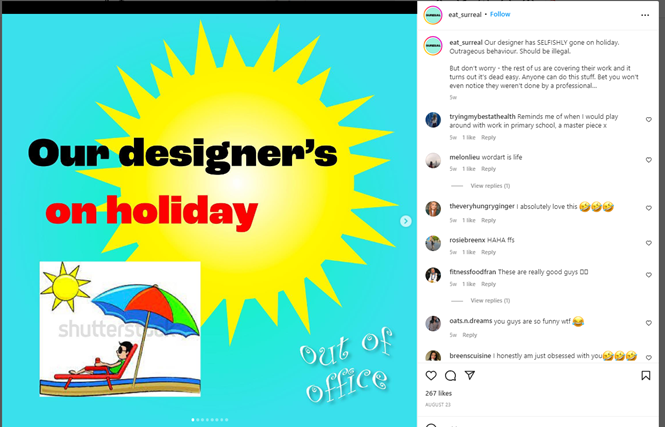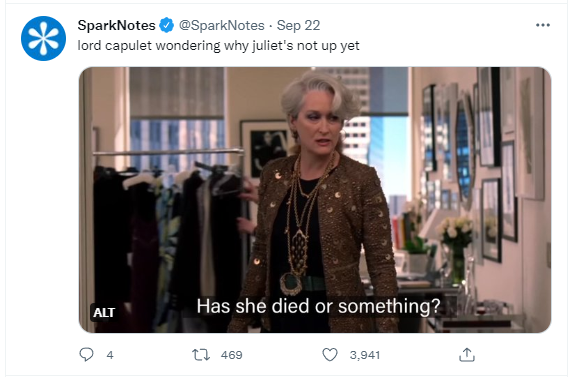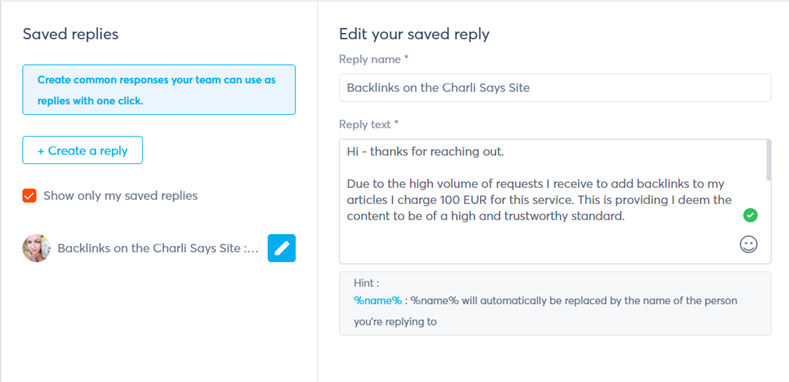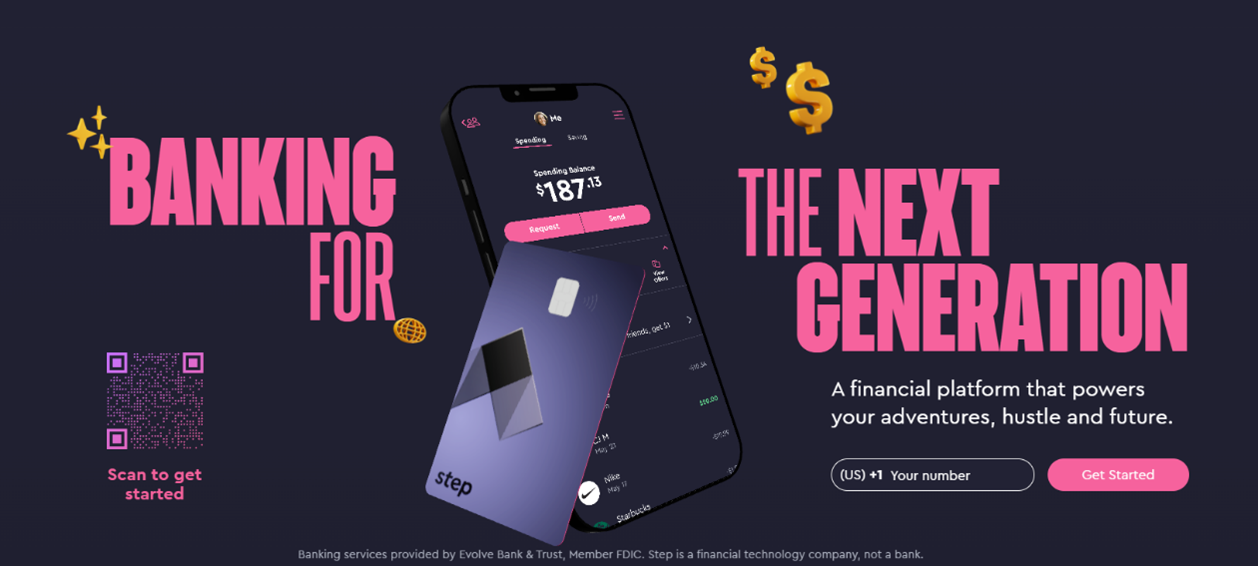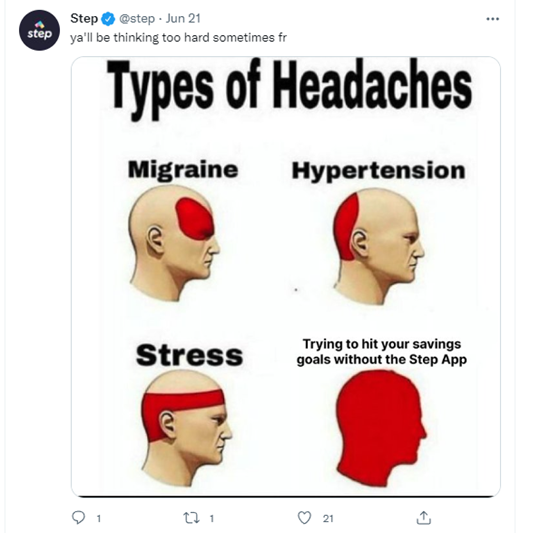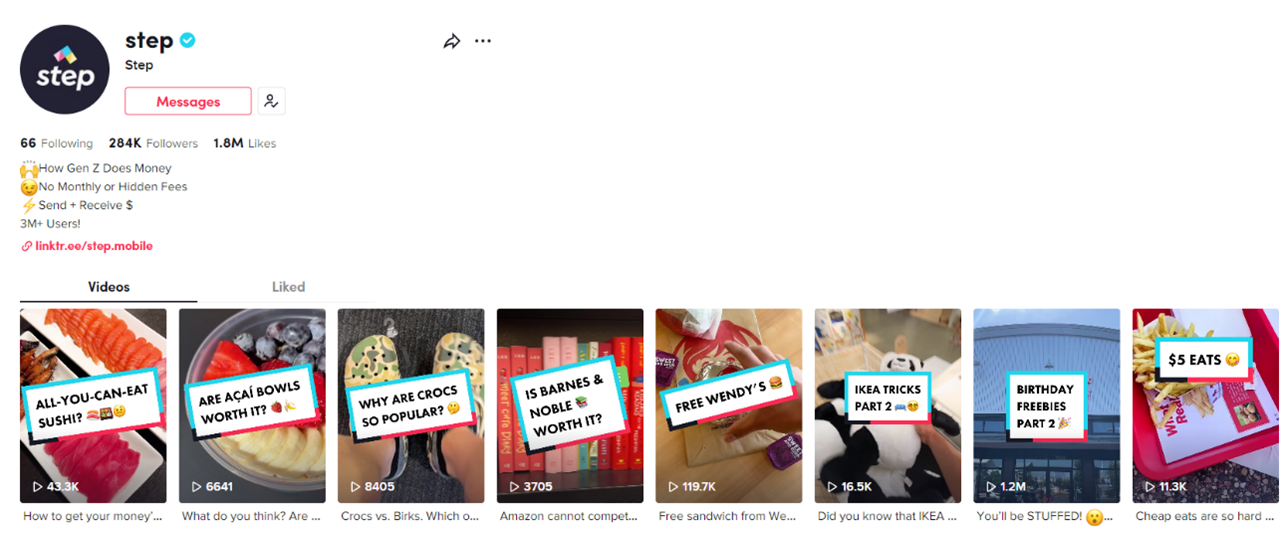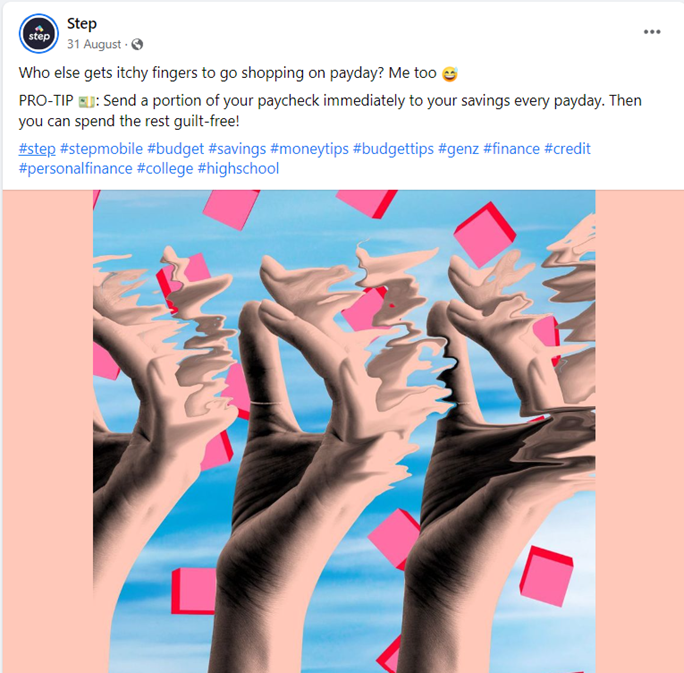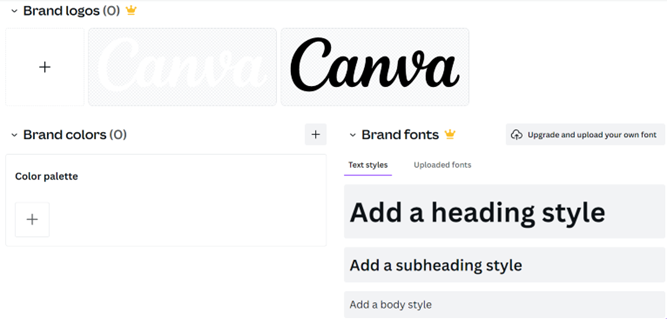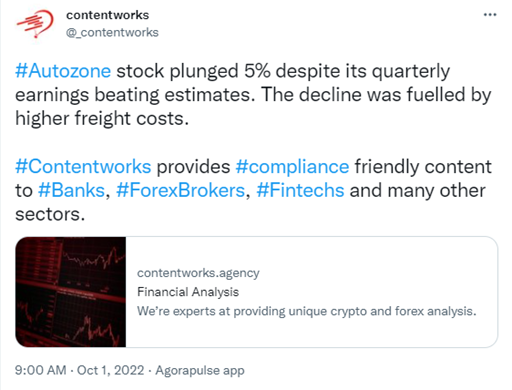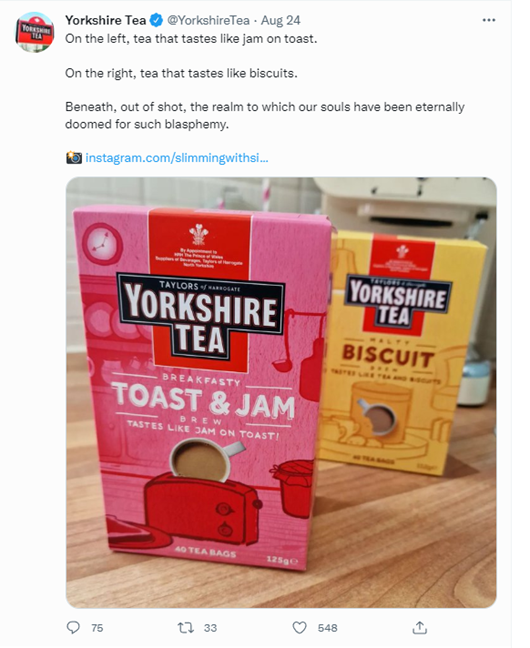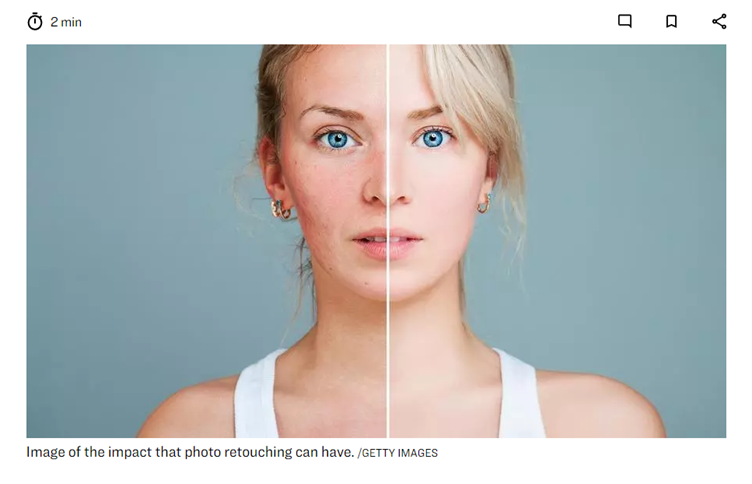Top-performing brands on social media all have one thing in common: They created a strong and consistent brand. And that didn’t happen by accident. The most popular, fun-loving brands have a social media strategy they’re following and superior social media management. That social media strategy includes having strong and consistent social media branding guidelines.
In having established (and enforced) social media branding guidelines across all marketing platforms, your business can increase revenue by as much as 23%, according to Adobe Express.
In this article, I’m walking you through social media brand guidelines with a quickfire guide to everything you need to know.
Plus, we’ll look at some brands rocking their branding guidelines.
What Are Social Media Brand Guidelines?
Every company should have social media brand guidelines—a document stating the brand voice, tone, form of communication, style, look, and feel that the brand will use on its social media channels. Put simply, it’s a social media style guide.
When social media followers see the brand on the different social platforms, they’ll instantly recognize the brand if it adheres to those social media brand guidelines.
A social media management tool like Agorapulse can help you keep track of all your branding through a robust content assets library. Try Agorapulse now for free.
Why Do You Need Social Media Branding Guidelines?
If you don’t have a social media style guide, creating a social media branding guidelines might just seem like more work to do.
Sure, they do involve a little extra effort, but it’s worth it in the long run.
Authenticity
88% of consumers say authenticity is a key factor when deciding what brands they support. Brands can hone their authenticity by being consistent in their messaging and branding.
Using a signature color can increase brand recognition by 80%. (That’s great for product sales!) Most people can easily recognize the McDonald’s logo. And for drivers on a highway, those yellow arches mean it’s time to pull off the road for something to eat!
Even without the logo, we still recognize the ingredients and colors! McDonald’s clearly uses a brand template for its social media.
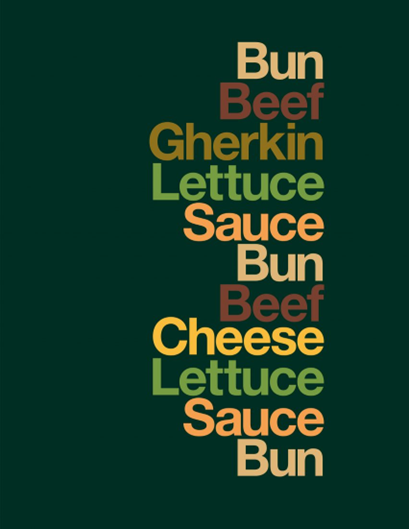
Example of strong branding guidelines in action
Consistency
Brand consistency is making sure that your brand values, image, and messaging are consistent across all channels. Consistency increases revenue by a minimum of 33%. Being inconsistent includes publishing too many social media posts one week and too little the next. Or being inconsistent about what content goes on each channel.
Alignment among team members
Social media branding guidelines keep your team on the same page, even if they don’t work in the same office. One in four Americans now works from home, and that figure is set to increase. That means you need solid “dos and don’ts” in place for everyone to follow in a social media style guide.
Easy to share expectations with new employees
Having social media guidelines also enables you to quickly onboard new employees. This is true for the agency model, too. If I assign a new social media writer to a client account, it’s much better to give them a helpful written social media style guide. The alternative is loads of backwards and forward emails, confusion, and meeting times.
Keep your social media branding across all channels with Agorapulse!
Recognition
With a clear set of social media guidelines, you can convey what your brand is all about. Doing so will help your content creators choose the right posts and avoid alienating your demographic. And by alienating, I don’t necessarily mean upsetting. There are some brands whose fans expect snarky responses and burn days like Wendy’s! This is a brand that regularly takes a pop at McDonalds, Burger King and its fans, and frankly, we’re here for it.

Social media brand guidelines example
Surreal cereal is a new brand I’m obsessing over. Their silly humor works well across all their channels and attracts a demographic ready for something fresh and fun. Like this post from their Instagram page! But don’t be fooled, there are some strong social media branding guidelines behind their posts.
What to Include in Your Social Media Brand Guide
So, we’ve established that you need to have some social media branding guidelines. But don’t worry, this doesn’t need to be a huge headache and you might already have a lot of this prepared.
Open a file on your shared server that can be accessed by your social media team and get ready to add some key social media branding documents.
Here are five elements I like to have my hands on before I brief my team at Contentworks Agency.
TL;DR
- Tone of brand voice
- A defined social media channel strategy
- Visuals for your social media style guide
- Hashtags rules
- Legal and compliance information
1. Tone of brand voice
Your tone of voice guide is one of the first items you should prepare before you launch your brand.
It should be created before you write the content for your site or start posting on your social media channels.
Your tone of voice is part of your brand personality. It will differentiate you from your competitors and create a bond of familiarity with your fans.
I’ve followed certain brands for years, and seeing each new post is like seeing social media posts from a friend. I know what to expect. It’s comforting to see them in my feed. Like SparkNotes on Twitter. I love their captions, memes and gifs about literary classics. Perfect for book nerds. If SparkNotes were to suddenly start posting about politics, world news, or celebrity gossip I would unfollow. Then cry into a book for a while.
When we create a brand tone of voice document, we might also create some additional rules or exceptions for social media.
These might include:
- Abbreviating long words, links, or phrases to fit social media caption constraints
- Whether you will be playful with fans in the responses on posts or more straight talking
- How your brand interacts with competitors on social media (Are you playing or are you ignoring?)
- If a fan mentions you and your competitor in a post, will you respond?
- If a fan tags you in a complaint post, what is your standard response? Will you direct them to DMs or answer publicly?
- Can you utilize user-generated content?
- Should you pass complaints to compliance and legal before you answer? Fans can take screenshots in seconds so deleting later won’t help you!
With the Agorapulse social media dashboard, you can create saved template answers for each brand you manage. That way, you can just change the name or tweak the answer, and your saved reply is ready to send.
Having saved replies can help keep your responses consistent and your brand tone of voice on track. It’s also helpful for team members to remember prices, directions, opening times and other frequently asked questions.
2. A defined social media channel strategy
We would normally do this as part of a larger content marketing strategy. But it doesn’t have to be complex if you don’t want it to be.
This part of the social media branding guidelines is simply defining which channels you will be on and what you will be posting on each of them. You need to define your brand voice for your social media profile.
Example of a social media channel strategy
For a finance client it might look something like this:
- Twitter: Breaking finance news, market movements, retweeting from finance sites and interacting with analysts. All serious, and no fun stuff.
- Facebook: Campaign news, promotions, event photos, and competitions. No analysis or charts.
- TikTok: All fun stuff. Behind the scenes, client problems, relatable stories, and office pranks.
- LinkedIn: News about partners and affiliates, new hires, life at the company and thought leadership from executives. You might also choose to share company PRs and awards on this channel.
- Instagram: Photos only of office locations, business trips, events, and team.
This is a channel strategy for a client utilizing our agency. This is a lot of content, visuals and planning, so if you’re a small brand or you don’t have a lot of free resources, cut down on your channels.
Content on each channel should be different as often as possible. So, you could start by choosing just two social media platforms, say LinkedIn and Facebook, and build out from there for your social media marketing.
Document the type of content that will be on each channel, so your team can follow a clear structure. That will ensure you retain and engage your fanbase on each channel. Often, they will be different demographics and expect different content.
Let’s look at teen finance brand Steps Bank as an example:
First, this is a finance brand that knows its demographics and sticks to social media branding guidelines.
On Twitter, they are interactive and fun with questions, quizzes, and fun stuff. Note the spelling and grammar in all their posts. This style works perfectly for them—but don’t try to copy it for a brand with different demographics!
TikTok for this brand is teen influencers, amazing money-saving tips, and fun challenges. How Gen Z does money sums up their activities here. (Hope they don’t mind an old Gen X marketer tagging along for tips on getting free nuggets!)
Facebook for this brand is relatable and arty memes about spending and saving money.
Steps are on all the other main channels, too, and do a great job separating out their content types. In addition, they maintain a strong brand voice with core taglines, hashtags, colors, and content styles.
Consistency is a key part of your social media guidelines. Or at least it should be.
Decide roughly how often you will post per day/ per week on each channel. For example, 5 x per day on Twitter and 3 x per week on each other channel. I find that Fridays are best for fun social media posts while Tuesday and Wednesday get a higher rate of engagement for educational content. (You’ll need to understand your target audience, their preferred social network (or social networks), etc. before you start planning your marketing efforts.)
Grab a FREE trial of Agorapulse now!
Agorapulse will help you stay consistent by giving you a with a shared team calendar that covers all your channels. That also means you can plan well in advance and cooperate with your teammates in the same space.

Shared calendar example
Here’s a brief, helpful tutorial about using shared calendars:
3. Visuals for your social media style guide
Your social media branding guidelines need to include your core visuals. Especially those pertaining to your social media channels.
What to include in your brand template:
- Brand colors. That’s the hex codes for your primary and secondary colors. It should also include guidelines on how to display them. For example, the amount of white space used in images and any colors not to use together.
- Fonts. What fonts should be used? What size are headers? How do you handle spacing? Should they be bolded?
- Filters. Will you be using filters on channels like Instagram? If you will, then which ones and at what intensity?
- Visual guidelines. What will be used for social media and what won’t? For example, will you use GIFs? If so, do they need to be company branded or can they be publicly accessible GIFs?
- Logos. You’re going to need access to a variety of logos in different sizes, color combinations, and on transparent backgrounds.
So why do these need to be included in a social media branding guidelines pack? Surely, your designer will just make everything?
Here’s the thing. Even if you have a designer, social media moves so fast, and social media managers will often create images and GIFs on the fly. A trend that requires an image usually has a shelf life of about 4 hours … and your designer isn’t always going to be able to accommodate that.
Using programs like Canva or Powtoon, images, GIFs and videos can be made relatively easily. And with design programs like Canva, social media managers can upload core branding elements like logos, color palettes, and styles to keep them aligned with the brand identity.
And even better than that, social media managers can store videos and images in their Agorapulse library for easy access whenever they need them.
I do recommend taking time to create a branded evergreen image library that will work with a variety of posts in your sector. That will keep your posting consistent if your designer is away or you need to fill calendar gaps.
4. Hashtag rules
Before you use hashtags, you need to understand how your brand wants to use them on each channel.
For example, some brands use contextual hashtags on Twitter like this:
While others put hashtags at the end of tweets or don’t use them at all. Like this. Love @YorkshireTea for dry British humor!
Other points about hashtags that should be included in your social media branding guidelines are …
- Any branded hashtags. These will be evergreen and not time-sensitive or related to a campaign. Like Nike #JustDoIt
- What platforms get hashtags. I rarely use hashtags on Facebook because people don’t use the platform in that way. However, I use them on Twitter and Instagram. You can define which platforms get hashtags in your social media guidelines.
- Number of hashtags. You may not want to be too specific about this as it can be seen as micromanaging. But you could say maximum of 6 hashtags per post to avoid overstuffing or including weaker trends.
- Hashtag trends. Will you include trending hashtags? If you will, is there anything you would avoid? I work with brands who have specified no COVID, no politics, nothing about violence. It’s important to establish this to keep your brand consistent.
- Hashtag accessibility. Hashtags written in CamelCase are more accessible for people using text to speech readers. The same goes for hashtags written in black rather than multiple colors as is possible on Instagram. Read more about social media accessibility here.
5. Legal and compliance information
I saved the best for last. Legal and compliance are now important factors to consider for many sectors posting on social media.
Certainly, this is true in the finance space where my agency is focused. Our posts need to be written to be acceptable to regulators like ASIC, CySEC, MFSA, FCA, FSA, FRB, SEC, MiFID II, and many more around the world. Additionally, posts will usually need to be approved by the brand’s compliance and legal team before they are posted. Check out my article on writing for the finance sector here.
And it’s not just the finance space that’s governed. Anything to do with legal, government, food and beverages, and pharmaceuticals are closely monitored. Then there are also platform guidelines to adhere to. For example, Norway banned influencers from retouching their photos or using filters.
And Instagram banned thinspiration hashtags and unrealistic weight loss images/captions. This area is particularly contentious and food and beverage companies in addition to those in the fashion and retail space should tread carefully.
So, what needs to go into your social media branding guidelines?
- Risk warnings. What risk warning needs to be in your caption for your social media posts? Can it be in the image and not the caption? Do they need to stay onscreen for a certain length of time in videos? Do they need to be a certain size? (Hint, yes, they do!)
- Rules on what not to say. In the finance space, we don’t make promises about getting rich, easy money, or fast wealth. Each sector will have its own list of don’ts. Bullet point them in your social media branding guidelines, so they never get included.
- Platform rules for your sector. Each sector has rules about what is not allowed. Include the key points relevant to your sector that could get your ad account banned or your page deleted!
- Handling complaints. In many companies, complaints on social media need to be passed to legal before a reply is sent. It’s important to define the rules on this, and also the timeframes that an answer should be in. It should be fast to avoid a PR crisis.
In Conclusion
Creating solid social media branding guidelines doesn’t need to take forever. But doing it will increase your brand strength and ultimately the results you get from your social media interactions.
Once you’re set on your social media branding guidelines, you want to schedule, post, and track all the results. The best way to do that is with Agorapulse! Get set on a free trial right now.



